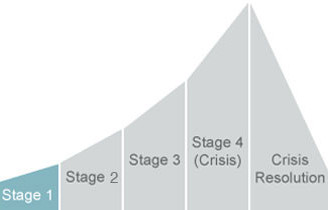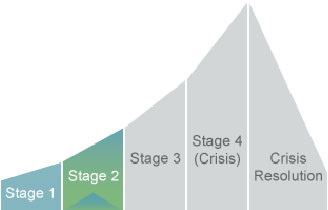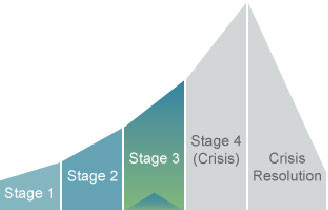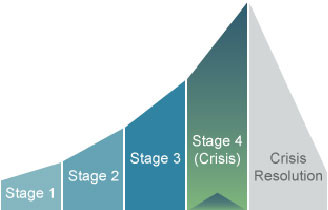Stages of Crisis Development
Crisis doesn't occur spontaneously; it is the final stage along a continuum of behavioral and emotional responses.
Stage 1: Normal stress and anxiety level

The background of crisis development brought about by the minor annoyances and frustrations of everyday life. Individuals at this stage are rational and in control of their emotions and behavior.
Stage 2: Rising anxiety level

A heightened condition typically including rapid heart rate and respiration. The person might appear lost or confused about how to solve a problem. Voice may be pitched higher or quaver with accelerated speech patterns. Small nervous habits such as finger or foot tapping may be manifested.
Stage 3: Severe stress and anxiety level

A person's reasoning capacity is seriously diminished, with fixation on the here and now. Behavior typically becomes boisterous or disruptive. Communication may include shouting, swearing, argumentation, and threats. Physical indications include pacing, clenched fists, perspiring, and rapid shallow breathing.
Stage 4: Crisis

Characterized by unbearable anxiety and loss of cognitive, emotional, and behavioral control, with urgent need to end the emotional pain. A person in crisis is unable to solve problems or process information rationally without help. Behaviors of persons in crisis are erratic and unpredictable to a point that they may pose a danger to themselves and others.